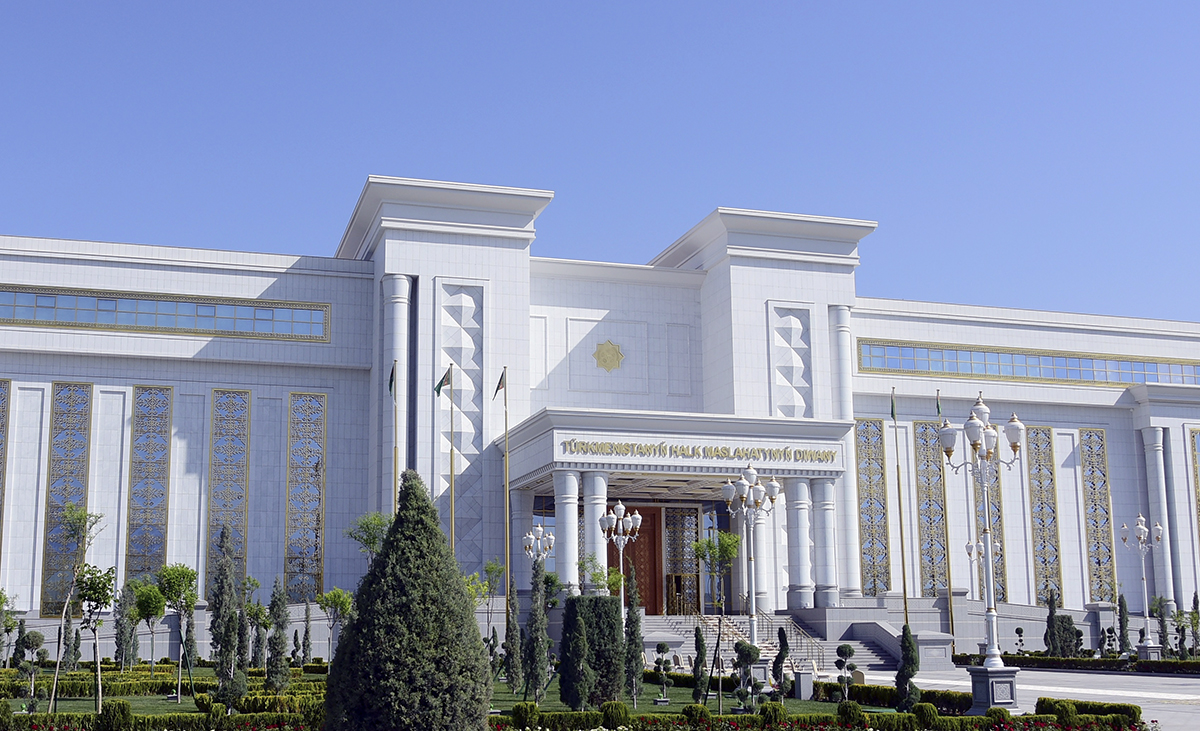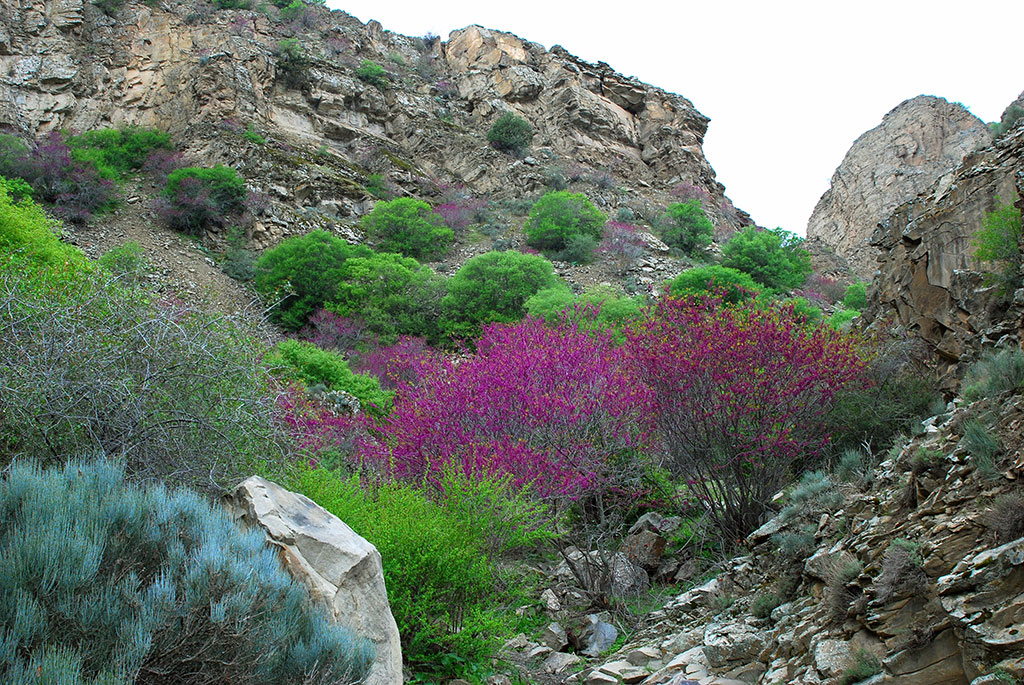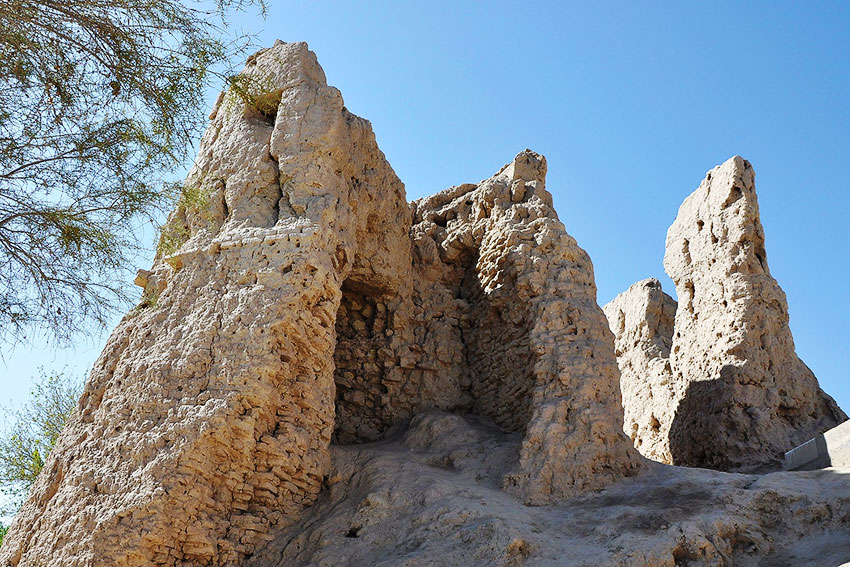To date three major historical and cultural reserve included in the World Heritage List of UNESCO. Each of them is a huge cultural and scientific value and they have become the favorite destination for foreign visitors.
In the delta of the Murghab has developed extensive agricultural oasis. It is one of the oldest places of settlement in Central Asia. It has preserved many architectural and archaeological monuments of different time. Now it is the territory of Mary province of Turkmenistan. The center is Mary city. Until 1937 the town was founded in the beginning of the XIX century. It was called Merv reproducing the ancient name known in the historical sources but long-vanished city whose remains are buried by sand and a hundred years ago have not yet been studied.

This center is an ancient settlement. It was abandoned by the inhabitants a long time ago. Its outstanding archaeological heritage located 30 km east of the modern Mary near the resort city of Bayramali. This vast complex of ancient settlements and the remains of a fortress was included in 1999 in the World Heritage List. Currently it is the core of the State Historical and Cultural Park "Ancient Merv".
One of the most valuable architectural objects of Merv related to XII is the mausoleum of Sultan Sanjar. Its lonely silhouette is visible from miles away. It is recognized as a fine example of medieval architecture, composition solution which is still admired.

Very north of Turkmenistan is the plase where the great desert sands alternate land irrigating by the Amudarya water. This is a Turkmen part of the Khorezm oasis which is one of the oldest places of settlement and development of human culture in Central Asia. Today this area is located within the boundaries of Dashoguz velayat. The center is the Kunyaurgench city . Its southern edge is adjoined by the territory of the same State Historical and Cultural Reserve. An area is about 640 hectares.
Ancient Urgench was known in some periods as Gurganch, Gurganj, Djurdjania. Obviously it existed for over two thousand years: from ancient times until the late Middle Ages. Its greatest political elevation occurred in the beginning of XI-XIII centuries. And art flowering and architecture known for extant monuments in the middle of the XIV century. Today this place is not only a famous tourist destination. Also it is an important object of pilgrimage for Muslims. Here is a joint project of the Government of Turkmenistan and the United Nations Development Programme (UNDP). It is called "Development Kunyaurgench cultural sphere". Since 2005 this reserve is included in the World Heritage List.

The ancient city Nisa and an outstanding archaeological complex are located in 18 km north-west of the capital of Turkmenistan on the outskirts of the village at the foot of Bagir Kopetdag. It consists of two separated by a distance of two kilometers from each other settlements, folded strata of the centuries-old cultural layers. They are now known as the Old Nisa and New Nisa. Even though New Nisa came earlier and there was a human settlement since ancient times (1st - 2nd century BC) until the late Middle Ages.
Most of the heritage preserved in Nisa and discovered by archaeologists refers to the period II. BC - III century. BC. It was in those days Nisa actively developed as a sacred city Arshacids dynasty . Arshakids were the creators of the Parthian empire. But Nisa has never been the administrative capital of the strongest Asian power of the time. It was competing with ancient Rome. Mithridat I (174-138 years. BC) was the fifth ruler of Parthia In the mid-170's BC. He founded residence known in those days as Mitridatkert (or Mihridatkirt) and now - as the Old Nisa. It was in the south of the abovementioned settlement. Today Old Nisa mound represents the remains of the royal fortress-residence. It was erected on the natural elevation which knocked down using clay or "pakhsa". Further was elevated and transformed into the platform area of about 14 hectares. The residence was in shape an irregular pentagon. It was surrounded by walls with numerous towers and built up by a complex structure of multiplex temple complex, the royal treasury and farm buildings which include a large wine storage.
In the delta of the Murghab has developed extensive agricultural oasis. It is one of the oldest places of settlement in Central Asia. It has preserved many architectural and archaeological monuments of different time. Now it is the territory of Mary province of Turkmenistan. The center is Mary city. Until 1937 the town was founded in the beginning of the XIX century. It was called Merv reproducing the ancient name known in the historical sources but long-vanished city whose remains are buried by sand and a hundred years ago have not yet been studied.

This center is an ancient settlement. It was abandoned by the inhabitants a long time ago. Its outstanding archaeological heritage located 30 km east of the modern Mary near the resort city of Bayramali. This vast complex of ancient settlements and the remains of a fortress was included in 1999 in the World Heritage List. Currently it is the core of the State Historical and Cultural Park "Ancient Merv".
One of the most valuable architectural objects of Merv related to XII is the mausoleum of Sultan Sanjar. Its lonely silhouette is visible from miles away. It is recognized as a fine example of medieval architecture, composition solution which is still admired.

Very north of Turkmenistan is the plase where the great desert sands alternate land irrigating by the Amudarya water. This is a Turkmen part of the Khorezm oasis which is one of the oldest places of settlement and development of human culture in Central Asia. Today this area is located within the boundaries of Dashoguz velayat. The center is the Kunyaurgench city . Its southern edge is adjoined by the territory of the same State Historical and Cultural Reserve. An area is about 640 hectares.
Ancient Urgench was known in some periods as Gurganch, Gurganj, Djurdjania. Obviously it existed for over two thousand years: from ancient times until the late Middle Ages. Its greatest political elevation occurred in the beginning of XI-XIII centuries. And art flowering and architecture known for extant monuments in the middle of the XIV century. Today this place is not only a famous tourist destination. Also it is an important object of pilgrimage for Muslims. Here is a joint project of the Government of Turkmenistan and the United Nations Development Programme (UNDP). It is called "Development Kunyaurgench cultural sphere". Since 2005 this reserve is included in the World Heritage List.

The ancient city Nisa and an outstanding archaeological complex are located in 18 km north-west of the capital of Turkmenistan on the outskirts of the village at the foot of Bagir Kopetdag. It consists of two separated by a distance of two kilometers from each other settlements, folded strata of the centuries-old cultural layers. They are now known as the Old Nisa and New Nisa. Even though New Nisa came earlier and there was a human settlement since ancient times (1st - 2nd century BC) until the late Middle Ages.
Most of the heritage preserved in Nisa and discovered by archaeologists refers to the period II. BC - III century. BC. It was in those days Nisa actively developed as a sacred city Arshacids dynasty . Arshakids were the creators of the Parthian empire. But Nisa has never been the administrative capital of the strongest Asian power of the time. It was competing with ancient Rome. Mithridat I (174-138 years. BC) was the fifth ruler of Parthia In the mid-170's BC. He founded residence known in those days as Mitridatkert (or Mihridatkirt) and now - as the Old Nisa. It was in the south of the abovementioned settlement. Today Old Nisa mound represents the remains of the royal fortress-residence. It was erected on the natural elevation which knocked down using clay or "pakhsa". Further was elevated and transformed into the platform area of about 14 hectares. The residence was in shape an irregular pentagon. It was surrounded by walls with numerous towers and built up by a complex structure of multiplex temple complex, the royal treasury and farm buildings which include a large wine storage.






